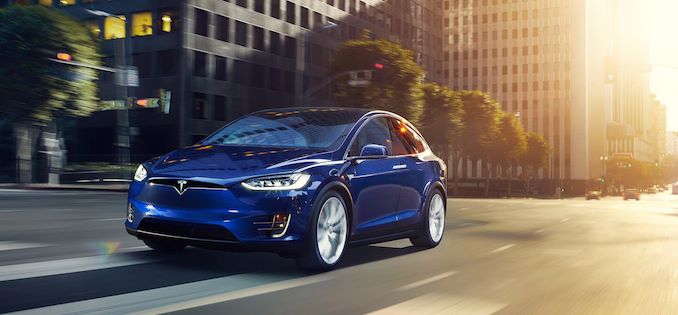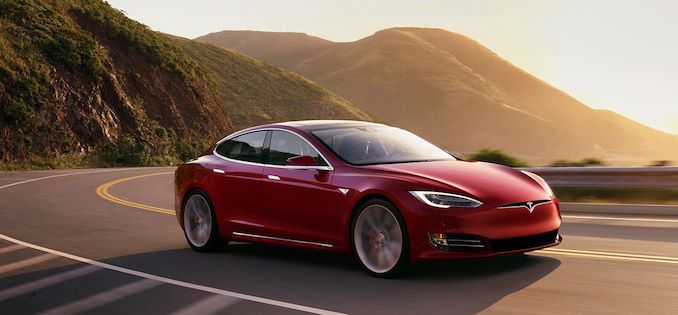Samsung & TSMC Develop 8nm & 7nm Automotive-Grade Nodes
by Anton Shilov on October 14, 2019 9:00 AM EST- Posted in
- Semiconductors
- Samsung
- TSMC
- 7nm
- Automotive
- 8nm
- 8LPP
- Samsung Foundry
- 8LPU
- N7
As vehicles are getting ‘smarter’ and gaining autopilot capabilities, it is easy to predict that the demand for higher-performing and more complex automotive SoCs will be growing rapidly in the coming years. To produce those SoCs, specialized manufacturing lines will be needed, which is why the two leading contract chip makers, Samsung and TSMC, are working on new nodes and IP aimed precisely at automobiles.
Samsung Foundry this past week said that in the near future it would introduce a version of its 8 nm process for automotive applications. At present, Samsung has two manufacturing processes that are defined as 8 nm: 8LPP and 8LPU, which are evolved from the company’s 10 nm node. It is likely that the automotive-grade 8 nm will be a further evolution of that technology. Right now, the most advanced nodes that Samsung uses to make chips for automobiles are its 28FDS and 14 nm technologies, so an 8 nm node will be a huge step forward.
Samsung did not disclose much about its automotive-grade 8 nm process, but the company did note that chips for cars have to comply with AEC-Q100 reliability standards, which mandates support for a -40°C to +105°C ambient operating temperature range, as well as a number of qualification reliability tests such as wear-out tests. Furthermore, to win designs with leading auto makers, these chips have to be made in facilities that have an IATF 16969-certified supply chain quality management system, which in short emphasizes defect prevention and variation reduction. Furthermore, any IP being fabbed, as well as development tools and the final devices themselves have to meet various ISO 26262 (aka ASIL) functional safety requirements, both individually and in context of a particular application.
Meanwhile, over in Taiwan, TSMC’s most advanced automotive-grade process technology today is 16FFC, which is current-generation as far as the automotive market is concerned, as it lags consumer SoC designers by two or three years. Looking towards the near future, TSMC has been developing an automotive-grade version of its N7 (1st Generation 7 nm) technology for quite a while, and expects it to be qualified by 2020. In fact, Synopsys has already developed essential automotive-grade IP for N7 (including DesignWare IP for LPDDR4X, MIPI CSI-2, MIPI D-PHY, and PCIe 4.0 IP), so chip designers are probably already working on new SoCs for vehicles to be made using TSMC’s leading-edge process.
Finally, while GlobalFoundries no longer develops leading-edge process technologies, it still has numerous nodes that can be used by the automotive industry for years to come, including 22FDX and 12LP. For now, these technologies are good enough for advanced SoCs, but it remains to be seen what the company offers to its clients from the auto industry.
Related Reading:
- Samsung Foundry Updates: 8LPU Added, EUVL on Track for HVM in 2019
- Samsung’s 8LPP Process Technology Qualified, Ready for Production
- Samsung’s Intros Exynos Auto V9 SoC: Octa-A76 Chip to Power Audi’s In-Vehicle Infotainment System
- GlobalFoundries and Synopsys Develop Automotive-Grade IP for 22FDX Process Tech
- Arm Unveils Arm Safety Ready Initiative, Cortex-A76AE Processor
- Imagination Launches PowerVR Automotive Initiative, 8XT-A GPU IP
- Bosch and NVIDIA Team Up for Xavier-Based Self-Driving Systems for Mass Market Cars













29 Comments
View All Comments
Jedibeeftrix - Monday, October 14, 2019 - link
How much crossover in physical characteristics of chips made for automative purposes such as this an radiation hardened nodes for use in space?Could these chips perform quite adequately in low earth orbit (avoiding the Val-Alen belts ofc), with just a modicum on shielding...?
tecknohow - Monday, October 14, 2019 - link
Radiation hardening is a completely different beast. I'm not aware of any radiation hardened chips under 180nm. They are frequently made on insulating layers like SOI and SOS, unlike other chips. Automotive chips are sometimes SOI, but not typically. Radiation hardened electronics often make use of bipolar transistors instead of FETs. Radiation hardened chips are often made on wide band gapped substrates like GaN instead of typical doped silicon. And finally they are usually protected by a shielding layer of borophosphosilicate or similar glass.Now the more interesting question is you second one - can they perform adequately? With enough redundancy, probably. SpaceX is using a triple redundant computer setup (with each computer self-checking by running everything across two separate compute pipelines) that is made with regular COTS chips (possibly automotive) for a significant amount of their processing. They likely also make use of radiation-hardened chips for some mission critical things, but that's a trade secret. So there is definitely a place for well designed non-radiation-hardened chips in space.
Kevin G - Monday, October 14, 2019 - link
I suspect that the radiation hardened chips SpaceX is using is the RAD750 which fits the noted specs: it can operate in a triple redundant configuration to handle data errors and fault tolerance. It is based upon the PowerPC 750 and is quite popular in this market segment. The PowerPC 750 and variants were quiet popular for automotive usage so porting the software between these platforms should be straight forward. The successor to the RAD750, the RAD5500 series, is available but I'm not of any implementation that has actually made it to orbit. The RAD5500 is noteworthy due to it being made on a 45 nm SOI process.soliloquist - Monday, October 14, 2019 - link
I know I am old school, but I want as few chips as possible in my car. I like it to be as analog as possible. No push button start, no electric parking break, no lane departure assist, no adaptive cruise control, ...I know that self driving cars will be ubiquitous soon, and I am all for them... for everyone else. But for me I want to row my own gears! Manual cars may be disappearing, but not in my garage.
Death666Angel - Monday, October 14, 2019 - link
As long as you keep them in your garage and don't disturb everyone else with them, I'm all for it!rrinker - Monday, October 14, 2019 - link
Problem is, it's all this half-way implementation of self driving that makes people complacent behind the wheel and think they no longer have to pay attention - the car will let me know if I need to do something. Right after you end up driving head on into oncoming traffic. If we had LESS of this prone to failure crap in cars, and if all cars were manual transmission, you'd have to DRIVE the car, and not have time to stare at your phone and text.Korguz - Monday, October 14, 2019 - link
Death666angelthat makes no sense
TheinsanegamerN - Monday, October 14, 2019 - link
Will you keep your computer filled nightmares in your garage so those of us that know how to drive dont have to worry about your distracted head smashing into us?rrinker - Monday, October 14, 2019 - link
Indeed. It's getting so difficult to find a car still offered with a manual gearbox. It may be taking a few more years, but we are reaching the point in Rush's Red Barchetta and the Road & Track story that inspired it.Alexvrb - Monday, October 14, 2019 - link
Hardly anybody buys manual and they're slower, to boot (especially compared to a good DCT). I know a lot of people mourning the impending doom of manuals and half of them don't even own a MT, or own one classic/older model, and all their newer vehicles are automatic. Guess what, they pay attention to what people buy and as a result they don't want to spend the time and money developing and supporting manuals for new platforms anymore. Plus by law if you sell one, you have to supply parts and service for a certain number of years (depending where you live), which is another burden they don't want for a small percentage of vehicles.The other bad news is that even without all those features, a modern vehicle would actually still have damn near the same number of chips. Plus having rare option(s) virtually always worsens parts availability (in the longer term) for the corresponding components and raises the prices for said components.